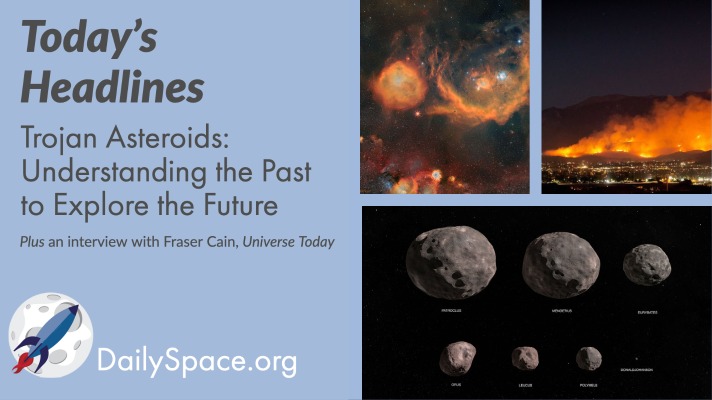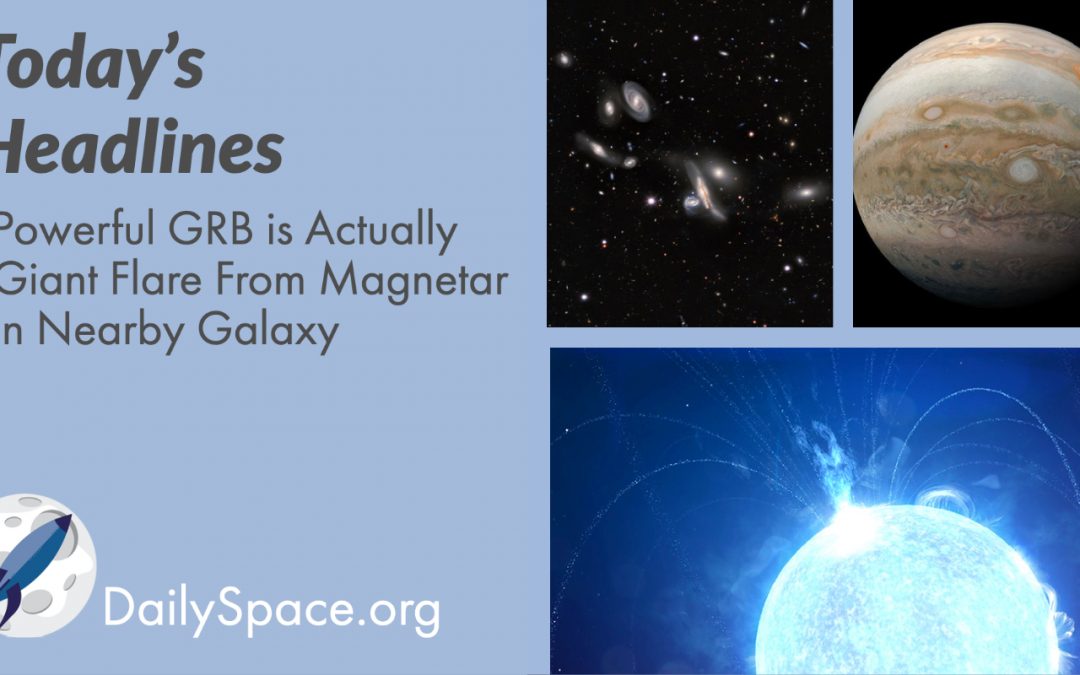
Mar 15, 2021 | Asteroids, Cosmology, Daily Space, Earth, Galaxies, Mars, Observatories, Physics, Sky Watching, Spacecraft, Supernovae Remnants
The IceCube Neutrino Observatory in Antarctica detected an electron antineutrino, confirming another piece of the Standard Model and proving that neutrino astronomy is feasible. Plus, a meteorite, wormholes, zodiacal light, and our weekly What’s Up segment.

Mar 14, 2021 | Asteroids, Comets, Daily Space, Earth, Exoplanets, Galaxies, Mars 2020, Milky Way, Perseverance, Planets
A new study examines the formation of rocky worlds from dust particles containing ice and carbon, increasing the possibility that our own Milky Way galaxy could be filled with aquatic planets similar to Earth. Plus, a simulation of the Milky Way-Andromeda collision and an overview of asteroid Apophis.

Mar 10, 2021 | Asteroids, Climate Change, Daily Space, Earth, Exoplanets, JAXA, Perseverance, Stars
A new super-Earth has been discovered that has an extremely hot surface temperature, and this planet could be a boon for studying the atmospheres of rocky exoplanets. Plus, our daily news roundup, climate change, and how a petrified tree on Earth might help us hunt for fossils on Mars.

Mar 3, 2021 | Asteroids, Astrobiology, Daily Space, Earth, Galaxies, Guest Interview, Jupiter, Spacecraft, Stars
Just how were the Trojan asteroids in orbit with Jupiter discovered? And how were they named? We take a look back at these objects as we get closer to the launch of the Lucy spacecraft. Plus, a cluster of galaxies, a meteoroid explosion at Jupiter, seafloor microbes, wildfires, and an interview with Fraser Cain, publisher of Universe Today and co-host of Astronomy Cast.

Jan 29, 2021 | Asteroids, Daily Space, Dark Matter, Earth, Galaxies, Moon, Sky Watching, Space History, SpaceX
Dark matter is only acted upon by the force of gravity according to new research, which constrains the potential range of mass for the elusive particles. Plus, how precipitation affects the Earth’s crust, a pair of ancient asteroid impacts in Germany, NASA’s Day of Remembrance, and this week’s What’s Up.

Jan 15, 2021 | AAS, Asteroids, Daily Space, Earth, Jupiter, Mars, Moon, Neutron Stars / Pulsars, Observatories, Physics, Spacecraft
Multiple international teams determine that a 2020 gamma-ray burst was actually a giant flare from a magnetar and that flare originated from a nearby galaxy. Plus, the Dark Energy Spectroscopic Instrument is ready for a new survey, NASA extends two planetary missions, and What’s Up in the night sky this next week.








 We record most shows live, on Twitch. Follow us today to get alerts when we go live.
We record most shows live, on Twitch. Follow us today to get alerts when we go live.